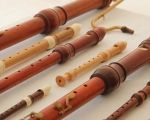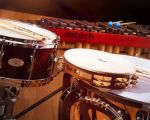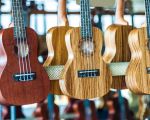- 1-Understanding-tonewoods
- 2-Popular-woods-for-string-instruments
- 3-How-wood-affects-instrument-sound
- 4-Rare-and-exotic-woods-instrument-makers-love
- 5-Sustainability-and-ethical-considerations
- 6-Choosing-the-right-wood-for-your-instrument
1. Understanding Tonewoods and Their Role in Musical Instruments
When asking what wood is used to make musical instruments, the key term to know is “tonewood.” Tonewoods are specific types of wood prized for their acoustic properties and ability to shape an instrument’s sound quality. Not all wood is suitable for crafting musical instruments; tonewoods are carefully selected for their density, grain structure, and resonance.
The art of instrument making, or luthiery, depends heavily on the choice of wood. Different woods influence the warmth, brightness, sustain, and overall tonal character of an instrument. Over centuries, certain woods have become standard for specific instruments because of their proven sound qualities.
Understanding tonewoods means diving into the science and tradition behind instrument construction—a fascinating blend of craftsmanship, nature, and acoustic physics.
2. Popular Woods for String Instruments
String instruments like guitars, violins, cellos, and double basses often use a combination of woods to achieve the desired sound. Some of the most common woods include:
- Spruce: Widely used for soundboards due to its excellent strength-to-weight ratio and bright, clear tone.
- Maple: Known for its bright and focused sound, often used in backs and sides of violins and guitars.
- Rosewood: Favored for its rich, warm tones and deep bass response, typically used in guitar backs and fingerboards.
- Mahogany: Offers a balanced, warm sound and is often used for guitar bodies and necks.
Each wood contributes differently to the instrument’s voice. For example, a violin crafted with a spruce top and maple back can produce a powerful yet delicate sound prized by classical musicians worldwide.
3. How Wood Affects Instrument Sound Quality
The physical properties of wood, including density, stiffness, and grain orientation, play a crucial role in how sound waves travel through an instrument. Denser woods like rosewood tend to emphasize bass and sustain, while lighter woods like spruce highlight brightness and clarity.
For acoustic guitars, the top wood or soundboard is the primary factor in sound projection. Meanwhile, the back and sides influence tonal color and resonance. This is why skilled luthiers carefully select woods to balance these characteristics, crafting instruments with unique voices suited to different playing styles.
Environmental factors such as humidity and age also affect wood’s acoustic properties, meaning that well-aged tonewoods can enhance an instrument’s sound quality dramatically over time.
4. Rare and Exotic Woods Instrument Makers Love
Beyond the common tonewoods, many instrument makers experiment with rare and exotic species to create distinctive tonal qualities. Woods such as ebony, cocobolo, ziricote, and Brazilian rosewood are treasured for their beauty and acoustic excellence, though often limited by availability and environmental protections.
For instance, ebony is renowned for its hardness and smooth finish, commonly used for fingerboards and bridges. Cocobolo offers rich visual appeal and warm tonal characteristics favored by custom guitar makers. However, conservation efforts mean many of these woods require responsible sourcing.
These exotic woods often add an artistic flair to instruments, merging aesthetics with acoustic performance in ways that captivate musicians and collectors alike.
5. Sustainability and Ethical Considerations in Tonewood Use
With growing awareness of deforestation and environmental impact, sustainability has become a central issue in sourcing woods for musical instruments. Many traditional tonewoods are now protected or regulated, prompting the music industry to explore alternatives.
Instrument makers are increasingly using reclaimed woods, responsibly harvested species, or innovative materials that mimic the acoustic properties of classic tonewoods. Organizations and certifications promote ethical wood sourcing, balancing musical quality with environmental stewardship.
Consumers and musicians can support sustainability by choosing instruments from makers committed to ethical practices or by purchasing certified tonewoods that ensure forest preservation.
6. Choosing the Right Wood for Your Instrument: Tips and Insights
Choosing what wood is used to make your musical instrument depends on your desired sound, playing style, and aesthetic preference. Beginners might prioritize durability and affordability, while professionals often seek specific tonewoods for their nuanced sound characteristics.
Visiting trusted retailers or custom luthiers can provide personalized advice. Additionally, exploring sound samples and reviews helps gauge how different woods affect tone. Remember, the wood is just one part of the instrument—craftsmanship and design also significantly influence the final sound.
For those interested in exploring the best wood options and instruments, Beat Trigger offers expert guidance and a curated selection of quality products tailored to musicians’ needs.








